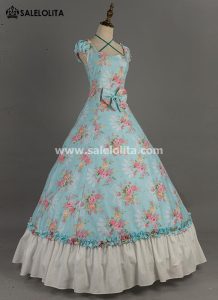The distinctive style of medieval dresses, often characterized by their floor-length form, has piqued the curiosity of many fashion enthusiasts and historians alike. The reasons behind the considerable length of these dresses are manifold, rooted deeply in the social norms, practical considerations, and symbolic interpretations of the medieval period, spanning from the 5th to the late 15th century.
Functionality played a crucial role in the design of medieval clothing. Long dresses provided necessary protection against the elements, including cold, rain, and the rough terrain that characterized life during these times. The length of the dresses shielded not only the woman's body but also her footwear, which was often more functional than decorative and needed to be protected from wear and tear.
Moreover, the lengthy style of these garments carried symbolic importance. In an era governed by strict hierarchies and social stratification, clothing was an immediate visual cue of one's social standing. Long, flowing dresses, requiring more fabric and maintenance, subtly indicated a position of wealth and status. Those who could afford to wear such attire were often not those who would be laboring in the fields; thus, the impracticality of a long dress was, paradoxically, a sign of privilege.

Similarly, the cultural and moral ethos of the medieval times profoundly influenced fashion. Women's attire was dictated by notions of modesty and piety, and long dresses ensured that the female form was well-covered and propriety was maintained. These garments were not designed to accentuate one's physical features, but rather to conform to societal expectations of female decorum.
In examining medieval fashion, it is fascinating to observe the evolution of styles into the subsequent historical period known as the Renaissance. The transition led to the emergence of new aesthetic and cultural trends, influencing women's fashion in profound ways. While medieval dresses were long and often more conservative, renaissance dresses began to exhibit more elaborate designs, intricate decorations, and even playful elements, reflecting the period's innovative spirit and renewed interest in classical ideals.
The Renaissance period, spanning from the 14th to the 17th century, indeed brought about a transformation in women's fashion. Dresses often featured fitted bodices, voluminous skirts, and increasingly elaborate embellishments, indicative of the era's artistic and cultural flourishing. The societal implications of dress length became somewhat less rigid, with functionality and fashion considerations intertwining in complex ways.
Understanding why medieval dresses were so long requires recognizing the multifaceted roles clothing has played throughout history. Beyond mere style or aesthetic preference, the fashion of an era often reflects deeper societal norms, economic statuses, and cultural values. The evolution from the practical, modest medieval lengths to the more ornate and diverse forms of Renaissance attire offers insightful perspectives on the dynamic nature of fashion as part of our collective history.